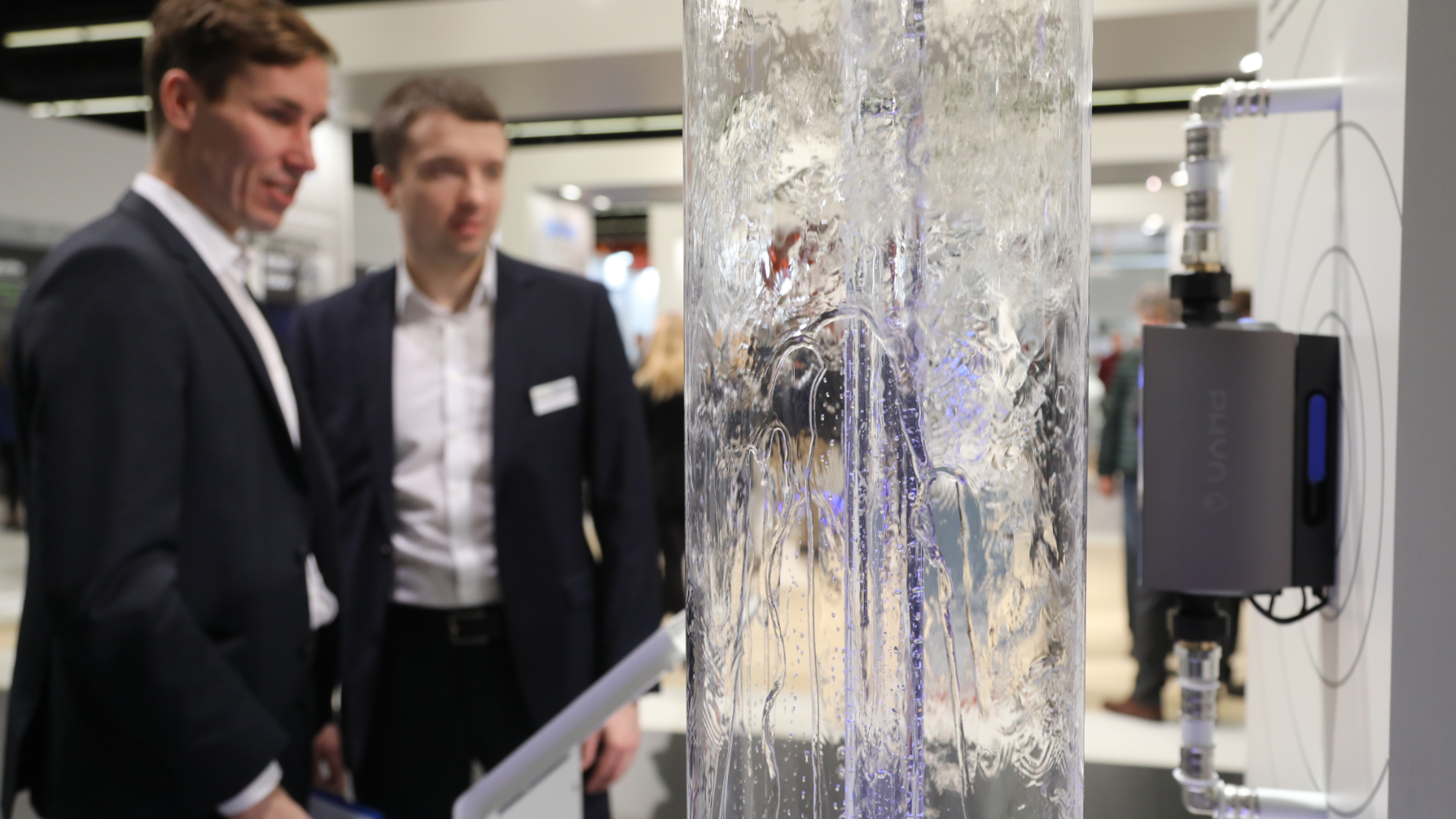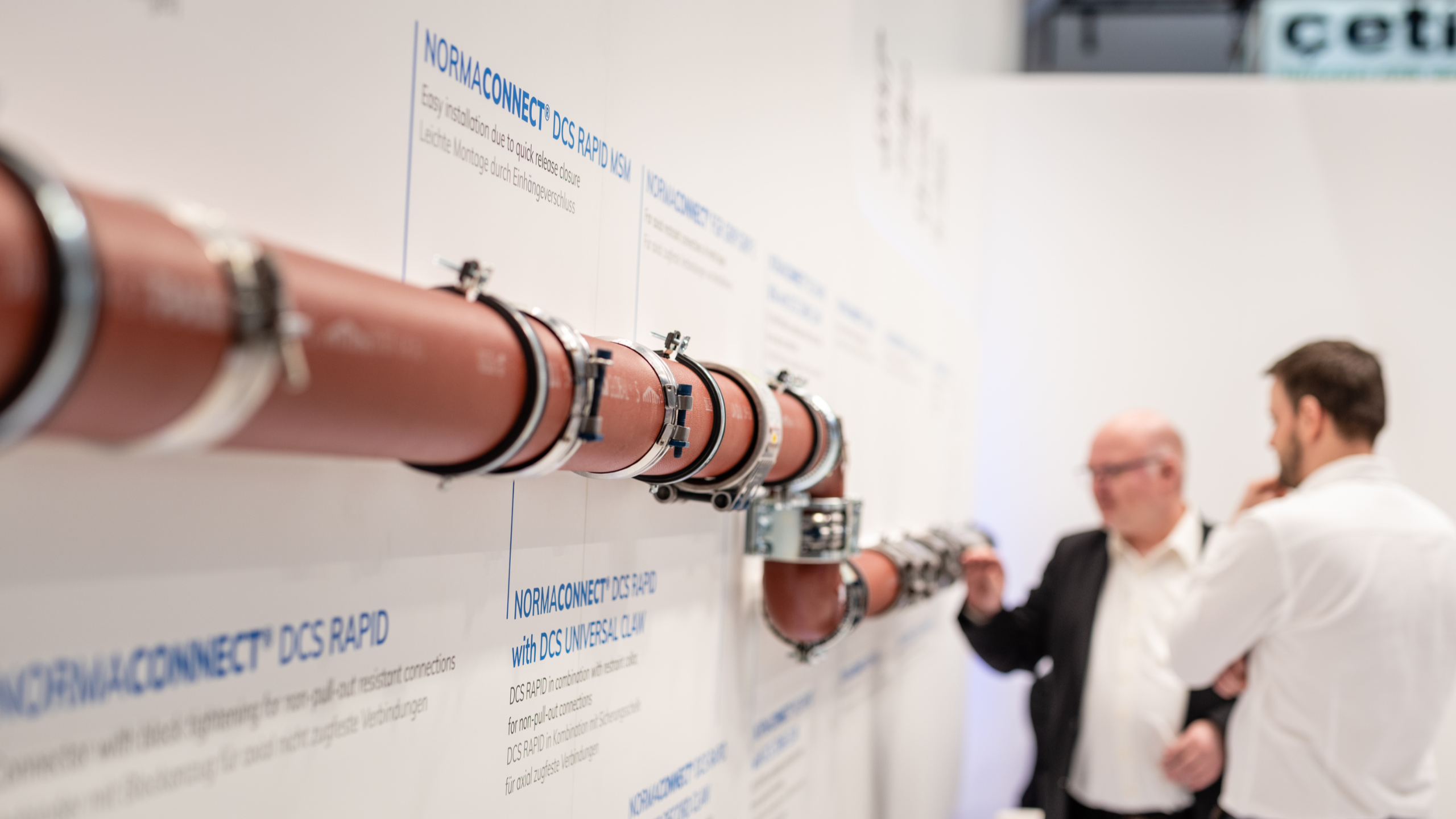Ways to a sustainable water supply

The future of the drinking water circuit is to be seen in the intelligent combination of hygiene, efficiency and sustainability. Drinking water systems must not only meet the highest standards of quality but also work in a resource-conserving and energy-efficient manner. Furthermore, the growing scarcity of water means that innovative processes are essential to ensure that arid regions can also enjoy reliable supplies of drinking water.
Drinking-water installations: structure and challenges
A well-thought-out drinking-water installation optimises the distribution of drinking water in the building, minimises stagnation zones and prevents water contamination. Series and T-piece installations are among the most common layouts, although looped ring installations have also become established as an interesting alternative.
When installing a drinking water system, the interaction of many components is crucial for the hygiene and quality of the drinking water, as well as for a safe water supply:
- The domestic water connection forms the interface between the supply network and the domestic installation whereby the mains pipe must be dimensioned in accordance with the expected peak load.
- Modern non-return valves are crucial for protecting drinking water hygiene by preventing contaminated water from flowing back into the system.
- Modern leak protection systems automatically detect even the smallest leaks and shut off the water supply to prevent water damage.
- Modern filter systems for drinking water, for example, reverse osmosis systems, can remove up to 99 percent of the substances dissolved in water. UV disinfection systems deactivate micro-organisms without changing the chemistry of the water.
- An important factor for drinking water hygiene is protection against legionella. Thermal disinfection systems periodically heat the water to over 70°C to kill legionella. Electrochemical processes such as anodic oxidation significantly reduce the energy consumed in combating legionella.
Expert installation is crucial for a functional and long-lasting drinking water circuit. Digital planning tools based on building innovation modelling (BIM) and 3D planning software make planning easier, ensure precise water-pipe installation and enable efficient maintenance in the future. Prefabricated installation modules also speed up the installation of drinking water systems and reduce the risk of mistakes.
Optimisation of existing water circuits
Optimising existing water circuits using innovative technologies can make a significant contribution to energy efficiency:
- Innovative heat recovery systems use heat from waste water to preheat fresh water. Modern heat exchangers can recover up to 60 percent of the heat from waste water and reduce the energy needed to heat water by up to 30 percent.
- Intelligent water-management systems monitor water consumption in real time and optimise the distribution of water in the building. AI algorithms help identify consumption patterns and detect anomalies, meaning leaks can be detected within minutes.
Combating water scarcity with innovative processes
Innovative approaches to the production and treatment of drinking water are very much in demand in arid regions.
- Generating drinking water from seawater: modern reverse osmosis systems and membrane technologies significantly improve the energy efficiency of seawater desalination plants.
- Atmospheric water generators can obtain up to 5,000 litres of water per day from humidity. The latest developments use MOFs (metal-organic frameworks) to increase the water yield when humidity is low.
- Compact, decentralised water-treatment systems enable surface water or slightly contaminated groundwater to be purified on site. These systems combine ultrafiltration, UV disinfection and electrochemical oxidation and can produce up to 10,000 litres of drinking water per day.
Modern drinking water systems in residential and commercial buildings combine high water quality with resource and energy efficiency. ISH 2025 presents future-oriented solutions for the entire drinking water circuit in buildings.
